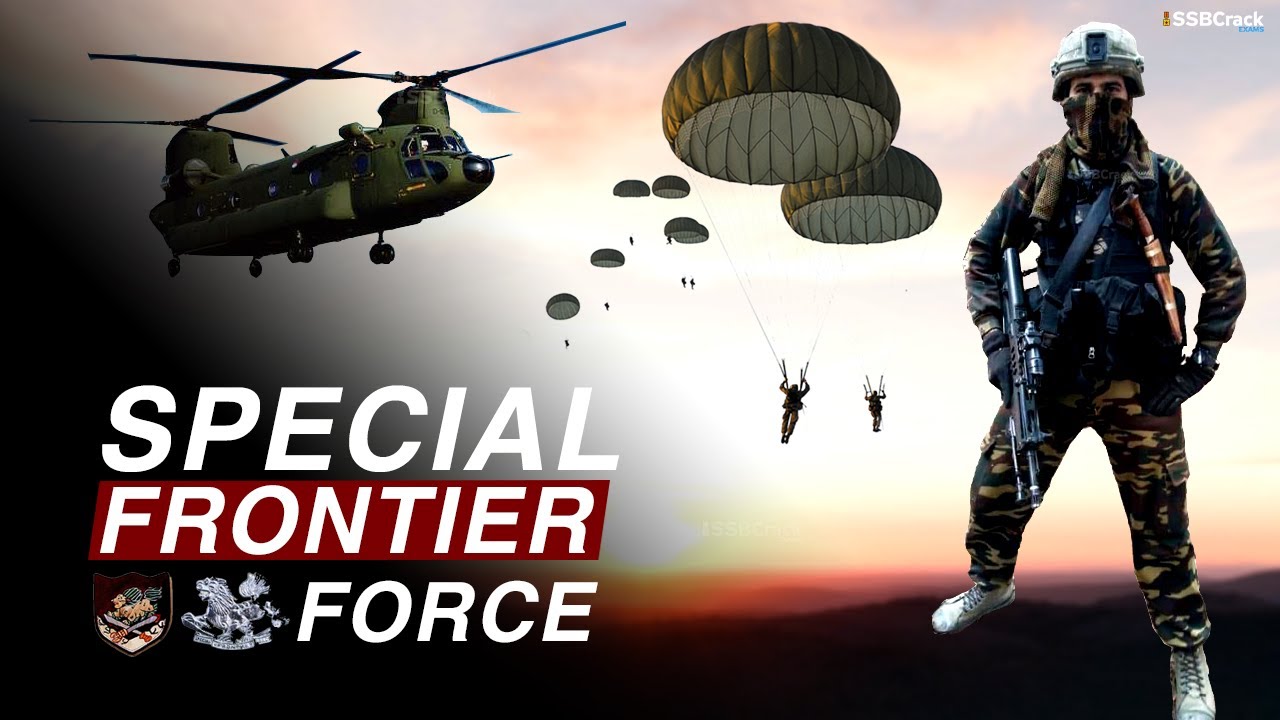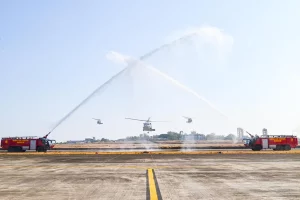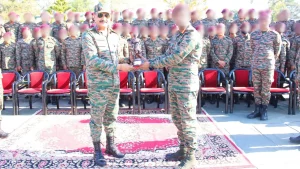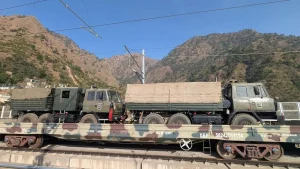The Special Frontier Force (SFF) Indian special unit is made up of Tibetan refugees. This Indian special operations unit was created on 14 November 1962. The need for a Special Frontier Force was felt after the 1962 China-India war. The SFF was raised by the Intelligence bureau, including Tibetan exiles. Now, the SFF also includes Gurkhas.
The Special Frontier Force (SFF) was initially named Establishment 22 which was named after the 22 Mountain Regiment commanded by Gen Sujan Singh Uban, an Artillery officer who also raised The Special Frontier Force (SFF). The SFF falls under the purview of the cabinet secretariat. On the ground, an Inspector General, who is a Major General in the Army commands it.
Vikas battalions are the units that make up the SFF. Former Army Chief Gen Dalbir Singh formerly held such a position. The major objective of the SFF was to conduct secret operations behind Chinese lines in the event of another Sino-Indian War.
Throughout, its existence, The Special Frontier Force (SFF) has fought many external wars for India such as Kargil War and the Bangladesh liberation war. It was also deployed to provide security to the then Prime Minister Indira Gandhi during the National emergency by being her “Personal Force”. They were also included in the internal security matters per operations such as Operation Blue star. Let us know more about The Special Frontier Force (SFF) in the article below.
History of The Special Frontier Force (SFF)
The Special Frontier Force has a very long history of making. Different regimes and external international diaspora has contributed to the history of SFF. We will look at it in the paragraphs below:-
- British India – the Tibetans have served in the contemporary Indian Army since its inception. During the Great Game, the British Indian Army began to utilize Tibetans in northern India and Tibet proper as spies, intelligence operatives, and even covert militia.
- Training with the IB and CIA in the 1950s – The American Central Intelligence Agency (CIA) and the Indian Intelligence Bureau (IB) created Mustang Base in Mustang, Nepal, during the 1950s, to educate Tibetans in guerilla warfare. During the Tibetan Rebellion of 1959, the 14th Dalai Lama was taken to India by the Mustang rebels. And eventually, the isolated area of the northern mountain-covered region of India started being utilized.
- Real Formation – the very idea of creating a special unit comprising Tibetan Refugees, and Tibetan resistant rebels were raised by General K S Thimayya when he was leading the Indian Army between May 1957 and May 1961. After the end of the Sino-Indian war of 1962, the Jawaharlal Nehru administration ultimately authorized the formation of an elite commando unit and specialized mountain division, thanks to IB Chief Bhola Nath Mullik and World War II veteran Biju Patnaik.
The CIA initially had supported the Special Frontier Force (SFF) but later they pulled out their support because of the changing scenarios of relations between the USA and India during the Cold War. The weapons like M-1, M-2 and M-3 submachine guns provided to The Special Frontier Force (SFF) used to be given by the CIA.
Battalion and composition
There are six battalions in the SFF: 1 Vikas, 2 Vikas, 3 Vikas, 5 Vikas, 6 Vikas, and 7 Vikas. Each battalion has about 800 soldiers. The six battalions are led by colonel-level Indian Army commanders. A battalion consists of at least five other Indian Army commanders. The Inspector General (SFF), a Major General officer, is in charge of SFF. The Special Group, or 4 Vikas, has its own line of command inside the R&AW.
The Special Frontier Force (SFF) is an ethics combination of Gorkhas and Tibetians. Gurkhas have been recruited to the SFF since 1965. As there was less induction of Tibetians due to their lessening population.
How are The Special Frontier Force (SFF) trained?
The SSF training centre is located near Chakrata, around 100 kilometres from Dehradun. The Army provides special forces training to recruits. The training is being conducted under the supervision of the Research and Analysis Wing (R&AW). All SFF soldiers are skilled parachutists, as the force was designed to operate beyond enemy lines. The para training begins at Sarsawa, near Saharanpur, where the Aviation Research Centre, R&AW’s covert air wing, maintains a base. Advanced training for high-altitude paradrops takes undertaken in Stakna in Ladakh. Women soldier serve in SFF units and get the same training as males.
SFF’s role in 1971 war?
Under the operation eagle, the SFF operated in the Chittagong hill tracts to neutralize Pakistan Army positions and help the Indian Army advance in 1971. As per the strategy, they were air dropped behind every enemy lines to destroy lines of communication. It helped in capturing the Pakistani personnel in the Bangladesh itself. And they were not able to escape into Burma. According to one estimate, nearly 3,000 SFF troops were utilized in the 1971 war’s eastern theatre. A huge number of them were honoured for their bravery.
Are SFF units part of the Army?
The SFF is nor under the Indian Army neither it is a part of Indian Army. But the commanding and administrative area is managed by the Indian army personnel only. SSF units have their own rank structures, which are equal to Army ranks. They are, however, special forces troops who have been extensively trained in a range of jobs.
Other major operations by SFF units
The Special Frontier Force (SFF) has taken part in many operations, and they have successfully won all of them. Some major operations conducted by the Special Frontier Force (SFF) are Operation Blue Star in Golden Temple Amritsar, the Kargil conflict, and counter-insurgency operations. Recently, the SFF was deployed in the Ladakh region to counterattack Chinese troops and their interference on the borderline. With the upcoming times, the need for the Special Frontier Force (SFF) just increases.
Undoubtedly, the people’s Republic of China is furious at the use of The Special Frontier Force (SFF) on the borderline. The reason is ignorance of china about Tibetan autonomy. China ignores the very autonomy and ethnic identity of Tibetans and fails to accept the Tibetan autonomic state. It considered Tibet as its essential land and finds the deployment of SFF as an act of undiplomatic interference by India.
Conclusion
So in the above article, we read about The Special Frontier Force (SFF). We talked about their history, how they formed and their roles and objectives. We also talked about the training process of SFF. The SFF unit consists of six battalions, out of which Vikas 4 works under the direction of R&W. The SFF has played a vital role in providing security to the nations from external as well as internal threats. External threats include the Kargil war, and Bangladesh Liberation war and internal security operations such as Operation Blue Star. The recent deployment of SFF near the Ladakh region proves the fact that SFF is a very strong and fully capable special unit. Follow SSBCrackExams o read more such articles. Jai Hind!
Also Read:
You can prepare for defence entrance exams such as NDA, AFCAT, INET, and CDS by taking Written Online courses as they will not only give you access to full-length quality lectures but will also provide the facility to take standardized mock tests for better study and strategic growth in the exam. You can take multiple quizzes after each lesson to ensure the full understanding of the subject along with creating your customized lesson plans. You can check out the course content along with other important specifics at SSBCrackExams.
To crack the SSB Interview, You can join our SSB interview live classes batch and we recommend you to Enroll SSB INTERVIEW ONLINE COURSE. Trusted by thousands of defence aspirants.



















